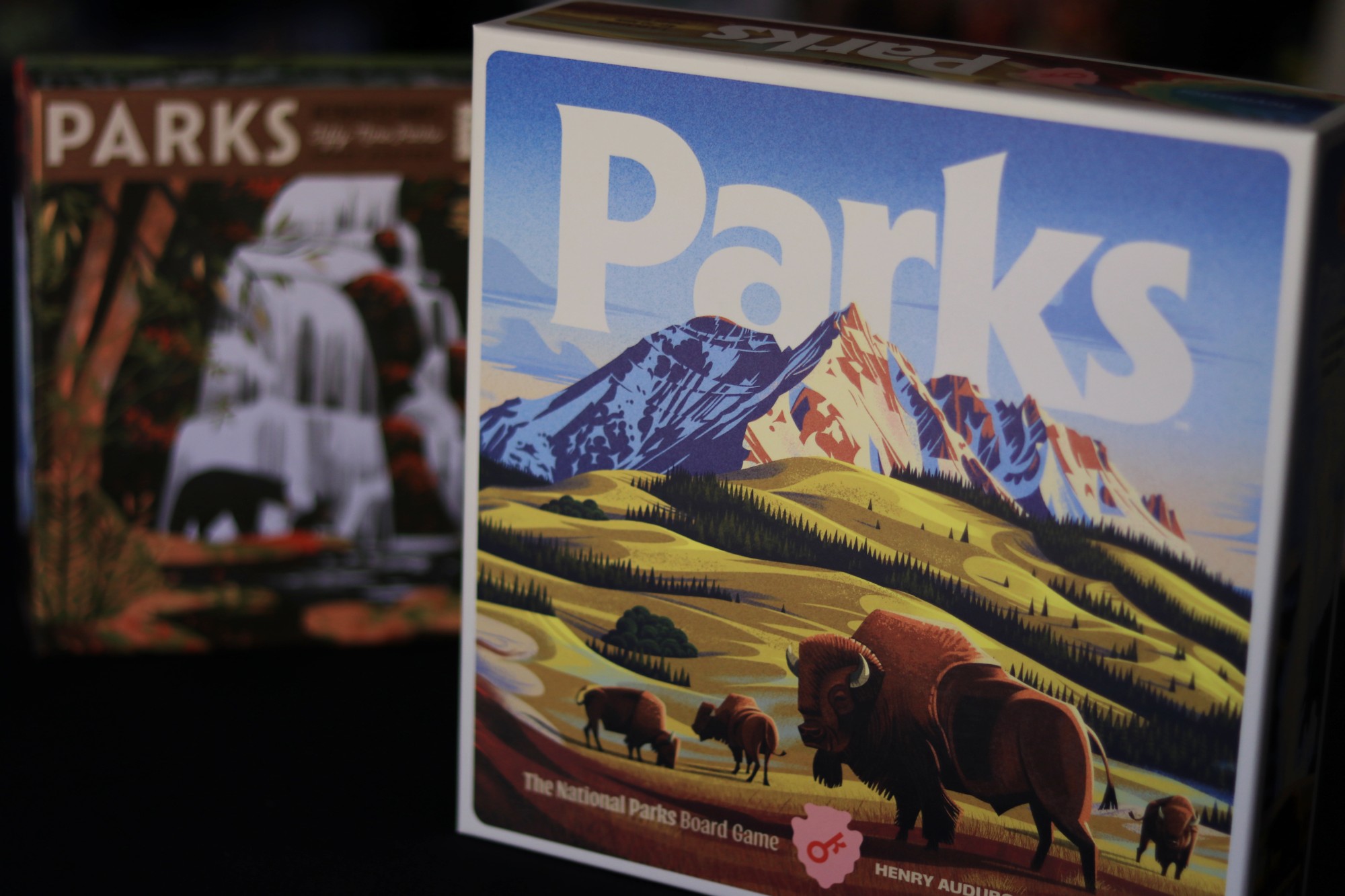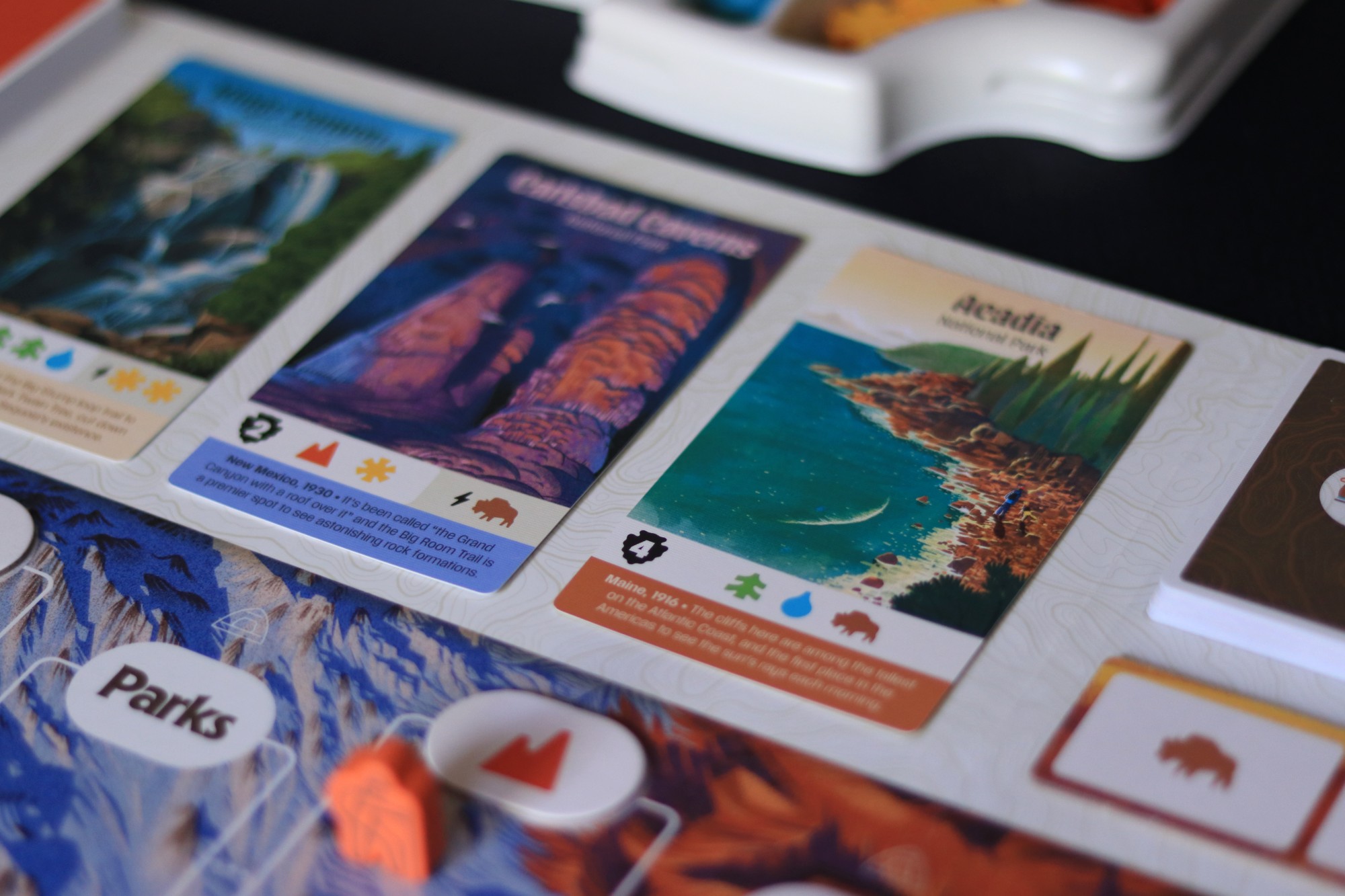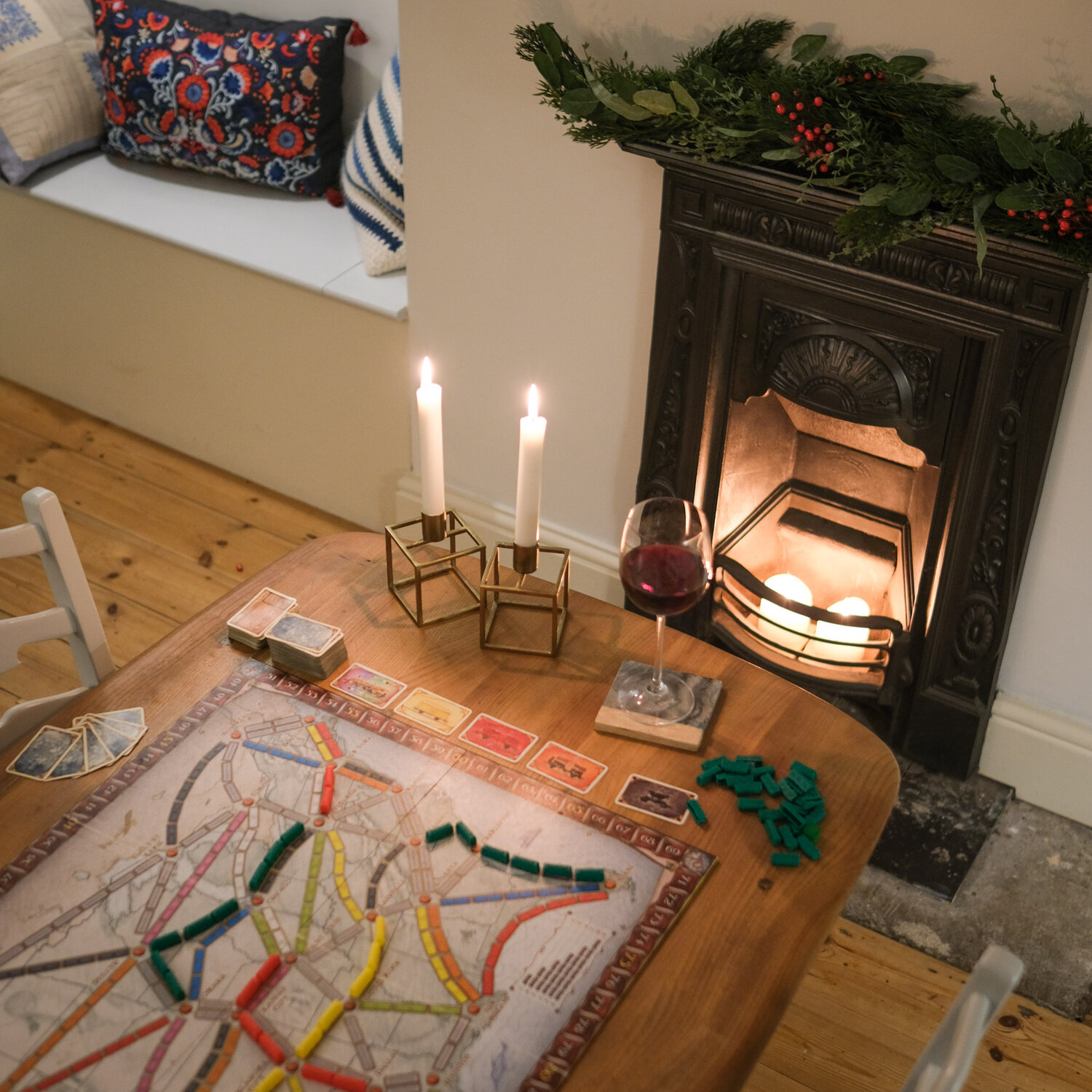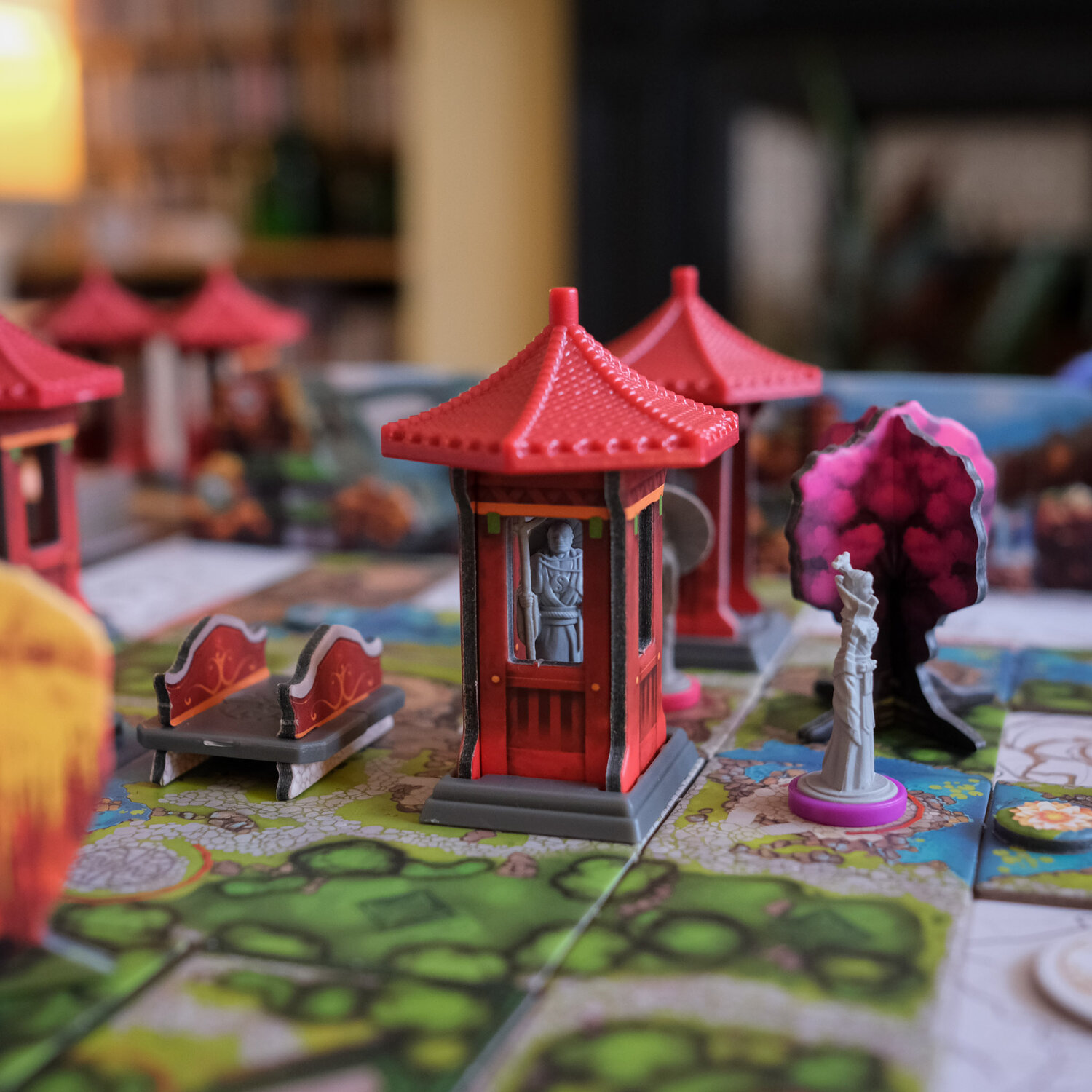Tokaido
You’ll like this if you like: Simple games, that play quickly, but offer a nice choice
This is a free review copy. See our review policy here.
Tokaido was first published in 2012. It was a bit of a cult classic. Beautifully produced. Simple but gorgeous art. And a clean and wonderfully flowing gameplay experience. Recently, Stonemaier, the publisher behind games such as Scythe, Wingspan, and Tapestry, has acquired the rights to the game and produced their own version. There are a few minor rule tidy-ups and component enhancements. But the main change is the addition of a solo player mode. If you own the base game, you can buy just the solo-mode rules and components required for this, along with the new Panorama cards, which have been printed on a better card stock; and as such, included in the solo mode. So, that anyone who wants just these added to their base game can acquire them cheaply. But is this game any good? Does it stand up to 13 years of change in the board game industry? Let’s get it to the table and find out.
To set up the game, which is a breeze, begin by placing the game board on a flat surface. Next, lay out the Achievement cards face up beside the board. Shuffle each deck of cards separately: the Souvenir cards (with a black back), the Hot Spring cards (light blue back), the Encounter cards (purple back), and the Meal cards (red back). Place each shuffled deck face down near the board. Next, organise the Panorama cards by type; Sea, Mountain, and Paddy, and arrange them in ascending order by value, placing the ‘1’ card on top, followed by ‘2’, then ‘3’, and so on. Position these resulting piles on their designated spots on the board. Then place the coins next to the board to serve as the bank.
Now, each player selects a Traveller piece along with the corresponding coloured marker and colour token. Place the marker on square zero of the Journey point track. This now runs around all four corners of the board, rather than just the top.
Then, each player draws two Traveler tiles at random, chooses one, and places it face up in front of them. For first-time players, there’s an option to simplify the game by starting with 7 coins instead of selecting a Traveler tile. Note, each card grants you a specific unique power. Next, place your colour token into the hole of your chosen Traveler tile to mark your colour. Return all unselected Traveler tiles to the box, as they won’t be used in the game.
Each player then receives coins equal to the number indicated in the upper right corner of their chosen Traveler tile. Finally, randomly place all Traveler pieces in a line at the leftmost inn (Kyoto). Alternatively, players may choose to start at the rightmost inn (Edo) and move from right to left throughout the game. Crazy huh! For two-player games, introduce a third, neutral Traveler to the starting inn. This neutral Traveler is controlled by the player whose Traveler is ahead on the road and follows specific movement rules we will cover later. You are now ready to play.
In Tokaido, the player whose Traveler is furthest behind on the road takes the next turn. If multiple players share the same space, the one closest to the edge of the board goes next.
On your turn, you move your Traveler forward toward Edo, (if you are going that way!) choosing any unoccupied space up to the next inn. You can skip over spaces if you wish, but you cannot move beyond the next inn. Once you land on a space, you immediately gain its benefit, such as collecting a card or earning coins. More on that soon.
After your move, the player now furthest behind takes the next turn. If you remain the furthest back after your move, you get another turn immediately. This turn order system encourages strategic planning: moving further ahead might secure a desired spot but could allow other players multiple turns before your next move. Balancing the timing and distance of your moves is key to maximizing your journey’s rewards. But there is only one spot available at each destination. Although, in Tokaido, some board locations have double spaces, which are used in the four or five-player games. The first traveler to arrive occupies the space on the road; the next traveler uses the adjacent space, considered slightly further along the journey. This is not available in a two or three player game though.
So, what can you do along the way, and how do you score points. Let’s look at them all one-by-one.
The Shop: When you stop here, you will draw the top three Souvenir cards and place them face up. You can choose to buy one or more of these cards by paying their listed prices, which range from one to three coins. Any cards you don’t purchase are placed face down at the bottom of the deck. Souvenirs come in four types: small objects, clothing, art, and food & drinks. Collecting different types in a set earns you increasing points: One point for the first unique type, three for the second, five for the third, and seven for the fourth, totalling up to 16 points for a complete set. You can start new sets at any time, and there’s no requirement to complete a set before beginning another. Note that you must have at least one coin to stop at a Village, but you’re not obligated to buy anything.
Hot Spring: Landing on a Hot Spring space allows you to draw one Hot Spring card and add it to your collection, scoring two or three points immediately.
Temple: When you stop at a Temple space, you must donate between one and three coins to the temple, placing them in the area corresponding to your colour on the top left of the board. For each coin donated, you immediately score one point. This donation contributes to your total at the end of the game, where the most generous donor receives 10 points, the second seven points, and the third four points. All other donors receive two points each. If multiple players tie for a rank, they each receive the points for that rank.
Encounters: In Tokaido, when you land on an Encounter space, you draw one Encounter card and apply its effect. Afterward, place the card face-up in your collection. These effects vary and include:
-
Shokunin (Artisan): Draw a Souvenir card and add it to your collection, scoring points immediately.
-
Annaibito (Guide): If you haven’t started the depicted panorama, gain a value 1 card of the appropriate type. If you’ve started it, gain the next number in ascending order. If completed, start or add to a different panorama of your choice, scoring points as usual.
-
Samurai: Immediately score 3 points.
-
Kuge (Noble): Gain 3 coins immediately.
-
Miko (Shinto Priest): The player immediately gains one coin and places it as an offering in the Temple on the area corresponding to their colour. They score one point for this donation.
Inn: Inns are mandatory stops where players can purchase Meal cards. Each Meal card costs one, two, or three coins and provides six victory points upon acquisition. The first player to arrive at an Inn draws a number of Meal cards equal to the number of players plus one, selects one to purchase, and places the remaining cards face down for other players to choose from. Subsequent players may purchase one of the remaining Meal cards, provided they can afford it. A player cannot purchase more than one Meal card per Inn and is not obligated to buy one. Additionally, a player cannot choose the same culinary specialty more than once during their journey. If you cannot afford to eat, or cannot by a new unique meal, you miss out! There is a benefit to getting to the Inn early, but do not rush there, you will miss out on important stops along the way. Getting this balance right is key.
Players will leave the inn in reverse order to which they arrived and continue their journey. When you reach the final inn, the game continues for other players and ends when all players have reached the final inn and chosen their final meal. Players then add points for four awards. The Collector: Awarded to the player with the most Souvenir cards. The Gourmet: Given to the player who has the highest total coin value on their Meal cards. The Chatterbox: Granted to the player who has collected the most Encounter cards. And finally, the Bather: Bestowed upon the player with the most Hot Spring cards.
finally, Travelers earn extra points based on their donor ranking to the Temple. The most points wins!
The two-player game uses a dummy third player. This is controlled by the player in the position closest to the start of their journey. When the neutral traveler lands on a Temple space, the player who moved them must donate one coin from the bank to the Temple, placing it on the space corresponding to the neutral traveler’s colour. This action impacts the final Temple donation scoring, as all coins donated to the Temple are considered during the end-game calculation of additional points for Temple offerings.
At Inns, the first player to arrive draws four Meal cards. When the neutral traveler stops at an Inn, the player who moved them takes the Meal cards and discards one at random, placing it face down at the bottom of the pile without revealing it. Otherwise, the game plays as usual. This simply adds some extra tension, as more spaces will be blocked to you along the way.
The solo game works using new Automa cards. Set up as usual, but then set up two separate Automa players. Do this by selecting a colour and placing the corresponding Traveler piece and colored marker for each one. Then, set aside space for coins and cards next to each Automa. Then, place the Automa’s colour token and one coin into their play area, immediately scoring one point for the coin. Note that the Automa does not receive a Traveler tile.
I won’t go into full detail here how this plays out, but you then play as normal, drawing a card for each of the Automa’s turns, telling you where to place it. They will score points based on the amount of each thing they get, card or coin. The type of card they get isn’t the point. It is the type. So they are encouraged to visit the same thing as often as they can, mirroring the way human players prioritize a few things in the game, as you cannot go for all areas of scoring in this game. It is a very clever, simple, intuitive and enjoyable system.
Is it Fun? Tokaido Board Game Review
Playing Tokaido is delightful. The decisions are straightforward yet rich with strategic depth. The game presents a constant dilemma: Should I advance quickly to secure a specific space, or take my time to explore more options, potentially missing that one crucial chance? This balance between speed and thoroughness adds a layer of excitement and replayability, as each choice feels significant and impactful.
Tokaido offers a delightful blend of simplicity and strategic depth, making it an engaging experience for players of all levels. The game’s mechanics are straightforward, allowing for quick learning and smooth gameplay. A two-player game can be completed in about 20 minutes, while a three-player game typically wraps up in under 30 minutes. This efficiency makes it an excellent choice for short gaming sessions or as a warm-up to more complex games. But you will still feel like you have played a game after this.
One of the game’s core decisions revolves around choosing between advancing quickly to secure a desired spot or taking a more leisurely pace to gather additional experiences along the way. This decision-making process is simple yet impactful, providing a satisfying sense of agency without overwhelming complexity. Especially when players are chasing different goals.
But the game truly shines when players pursue similar objectives, leading to increased interaction and strategic competition. In these moments, paying close attention to opponents’ moves becomes crucial, adding a layer of depth and excitement to the journey. This dynamic encourages players to adapt their strategies and enhances the overall enjoyment of the game.
Tokaido is a beautifully crafted game that combines ease of play with meaningful choices, offering a serene yet engaging experience that comes alive through player interaction and thoughtful decision-making. It stands up still after all these years, and this new production is wonderful. If you don’t have the game yet, I would heartily encourage you to check it out if you enjoy set-collection games. If you won it and fancy the solo mode, give that a go.
It’s a very simple game. Maybe too simple for some. But I enjoy the different ways to play and score. I do favour the Panorama cards, simply because they look so nice when complete. I get a real sense of satisfaction simply by gaining all cards in each one so I can see the complete panorama before me. Tokaido really is just that type of game. Stonemaier has done a wonderful job with this new edition. The game keeps the core mechanics, tidies up the rule book a little, adds the solo mode, and brings in other simple changes, such as detailing the powers of each of the Traveler cards so you don’t need to refer to the rule book. The front of the cards is the same with the same icons, but on the back you now have the detail. This simple change summarises the craft and class this reprint has seen. Everything has been done with the game’s original core beauty in mind, simply refining a few edges. Well done to all.




















































